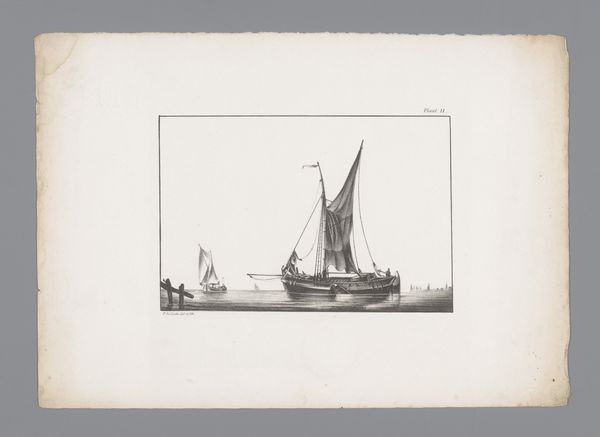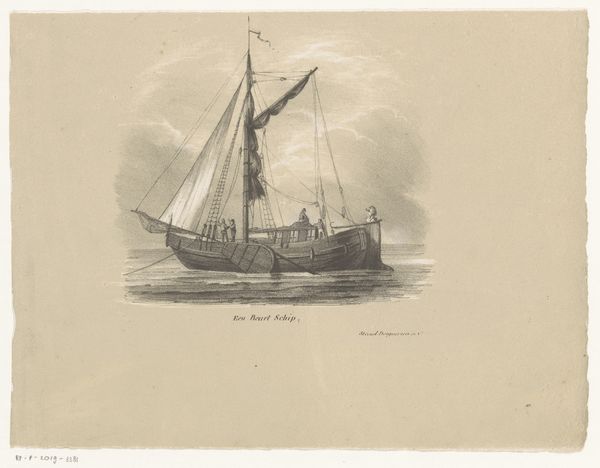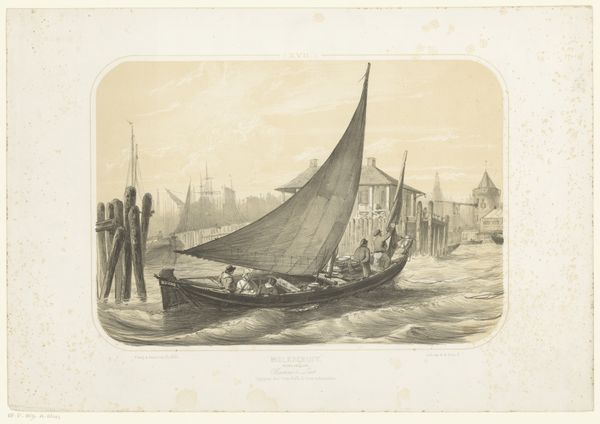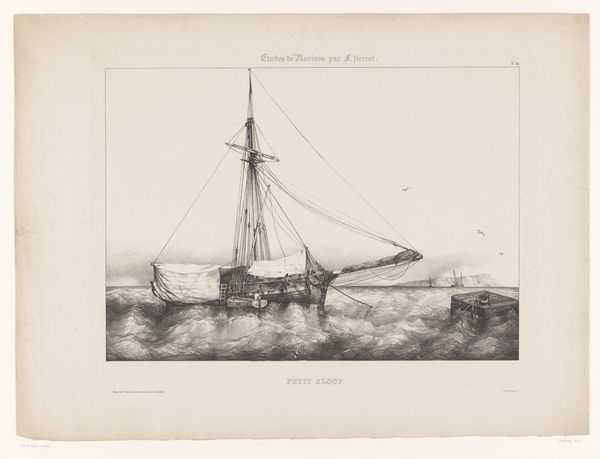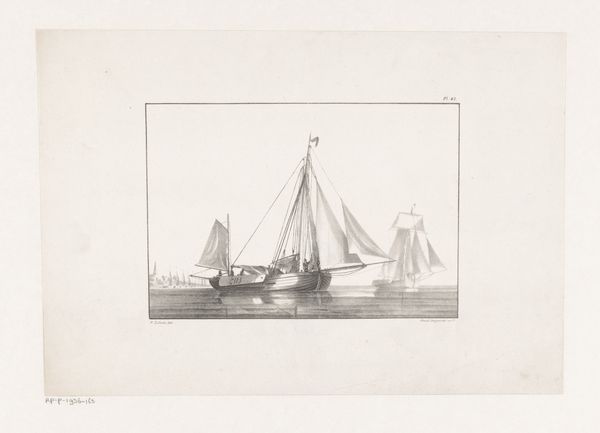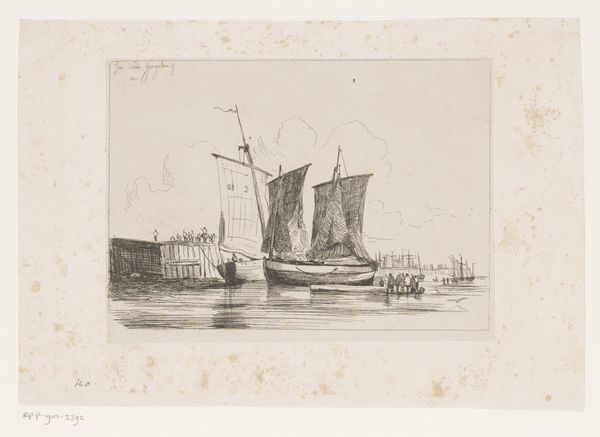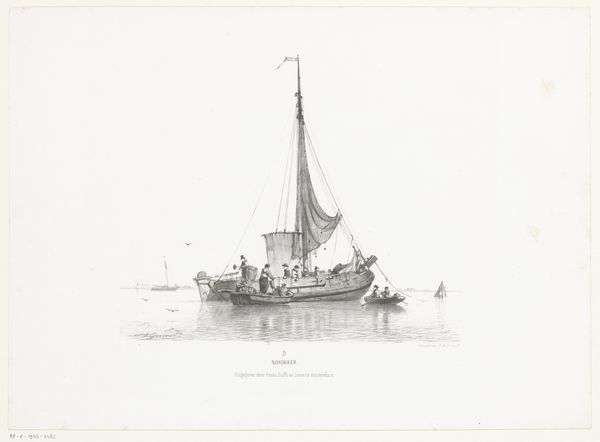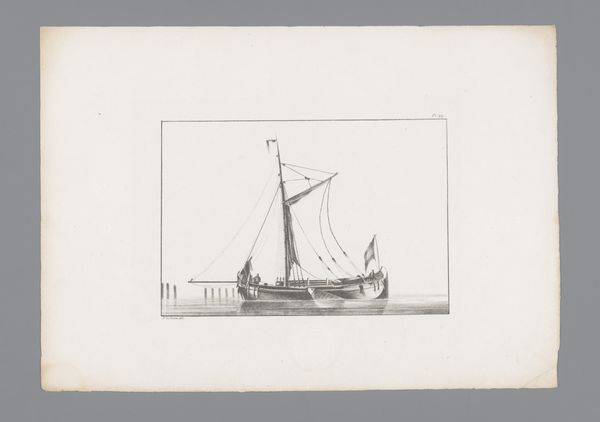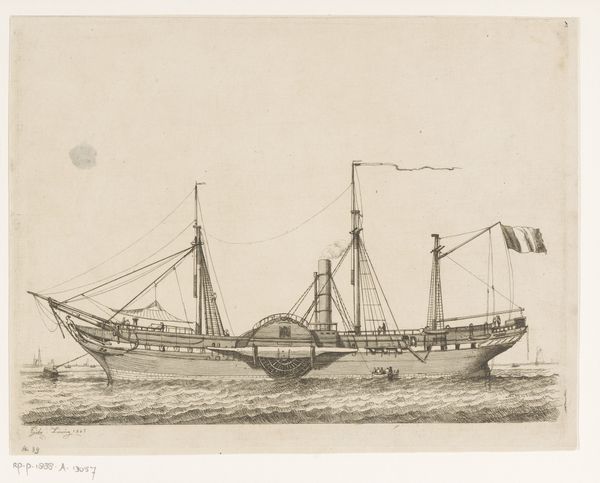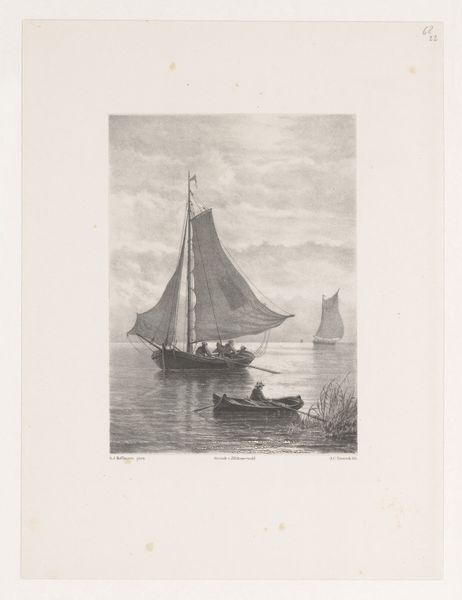
Dimensions: height 242 mm, width 301 mm
Copyright: Rijks Museum: Open Domain
Curator: Today, we're observing Petrus Johannes Schotel's, "Aangemeerde zeilboot," created sometime between 1847 and 1865. This artwork on view in the Rijksmuseum. It employs a variety of materials, including drawing, print, watercolor, ink, and pencil. Editor: It's stark, almost monochromatic. The varying shades create a somber, muted atmosphere. The central boat feels very solid against the wispy rigging and other vessels fading in the background. Curator: Yes, consider the deliberate layering. Ink establishes the primary structure, lending volume and a definite form to the boats themselves. In contrast, the watercolor and pencil appear to be used with a diluted and diluted tone, to represent the subtle play of light on water. Editor: The aged wood, the worn sails, all tell a story of labor and trade. You can almost feel the roughness of the rope, the grit of the sand. The boat isn't merely depicted; it's rendered with a tangible, worked-over quality that conveys human experience. What kind of paper was available at the time? And how accessible would it have been to an artist of Schotel's social class? These questions reveal much about how we understand its value, even now. Curator: A fine point, I'm fascinated by how the romantic elements in this drawing are anchored by its realistic depictions. The light captures our eyes immediately. If we start there we can follow the meticulous craftsmanship in its structural harmony to notice other artistic achievements, without being distracted by mere materials of social implications. Editor: Perhaps, but I cannot look at art removed from the materials from which it was made or the reality from which it comes. We should note here, I think, the subtle representation of figures on the boat as they are not central to the structure itself. The narrative context invites questions about how labor relations between the traders impact one’s view. What sort of cultural currency was it? And who got to consume this image or experience. Curator: Well, ultimately, Schotel’s delicate treatment transforms common scenes into something genuinely timeless through its form, light and the arrangement of different planes in creating visual pleasure. Editor: Precisely and, understanding his methods helps us view it, less as something static but as the material artifact that speaks directly to history itself.
Comments
No comments
Be the first to comment and join the conversation on the ultimate creative platform.
